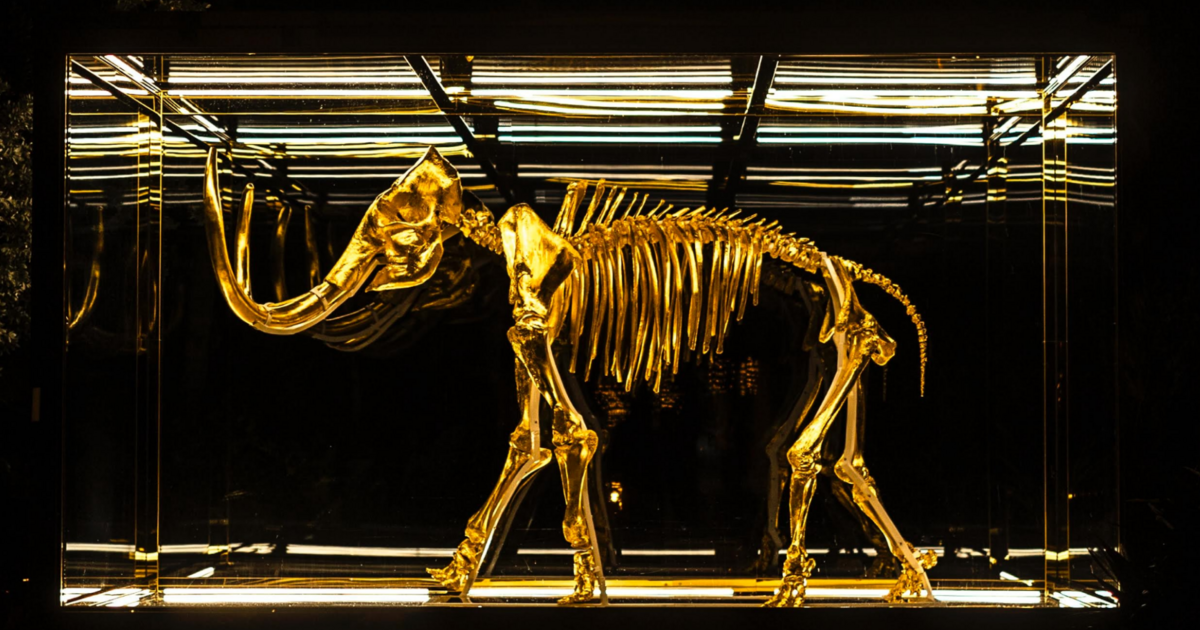https://www.europesays.com/2274762/ Anti-War Drama Oxygen Wins Best Israeli Film At Jerusalem Film Fest #Israel #jerusalem #JerusalemFilmFestival #oxygen #TheSea #TheSecretAgent
Recherches récentes
Options de recherche
#oxygen
Life on the Moon?
#Soil on #Moon might sustain life
Researchers from University of Hong Kong developed technology to extract #water from #lunar soil & use it to convert carbon dioxide into #oxygen & #chemical #fuel
The #research could “potentially open new doors for future deep space exploration” because it could mitigate the expensive costs needed to bring essential resources such as water to the Moon.

10 animals that can survive without oxygen
Creatures beating oxygen odds Whereas the majority of the living beings on the planet cannot live without oxygen,…
#NewsBeep #News #US #USA #UnitedStates #UnitedStatesOfAmerica #Wildlife #Animals #animalsthatcanlivewithoutoxygen #jellyfish #oxygen #Science #tubeworms
https://www.newsbeep.com/us/22824/
https://www.europesays.com/us/76231/ 10 animals that can survive without oxygen #animals #AnimalsThatCanLiveWithoutOxygen #jellyfish #oxygen #Science #tubeworms #UnitedStates #UnitedStates #US #Wildlife
17-Jul-2025
Tracking #AtlanticMeridionalOverturningCirculation using benthic #foraminifera
New study: More #oxygen in the oxygen-minimum zone associated with weaker #Atlantic overturning circulation

#Jellyfish attack #NuclearPowerPlant. Again.
By Susan D’Agostino | October 28, 2021
"#Scotland’s only working nuclear power plant at #Torness shut down in an emergency procedure when jellyfish clogged the sea water-cooling intake pipes at the plant, according to the Scotland Herald this week. Without access to cool water, a nuclear power plant risks overheating. The intake pipes can also be damaged, which disrupts power generation. And ocean life that gets sucked into a power plant’s intake pipes risks death.
[...]
"The clash between gelatinous jellyfish and hulking nuclear power plants has a long history. These spineless, brainless, bloodless creatures shut down the Torness nuclear power plant in 2011 at a cost of approximately $1.5 million per day, according to one estimate. Swarms of these invertebrates have also been responsible for nuclear power plant shutdowns in Israel, Japan, the United States, the #Philippines, #SouthKorea, and Sweden.
"Humans have unwittingly nurtured the adversarial relationship between jellyfish and nuclear power plants. That is, human-induced #ClimateChange has raised ocean water temperatures, setting conditions for larger-than-usual jellyfish populations. Further, the relatively warm water near nuclear power plant discharge outlets may attract jellyfish swarms, according to one study. Also, #pollution has lowered #oxygen levels in sea water, which jellyfish tolerate more than other marine animals, leading to their proliferation.
"Some look at jellyfish and see elegant ballerinas of the sea, while others view them as pests. Either way, they are nothing if not resilient. Jellyfish are 95 percent water, drift in topical waters and the Arctic Ocean, and thrive in the ocean’s bottom as well as on its surface. Nuclear power plant operators might take note: Older-than-dinosaur jellyfish are likely here to stay."
Full article:
https://thebulletin.org/2021/10/jellyfish-attack-nuclear-power-plant-again/
#OceansAreLife #NuclearPowerPlants
#NoNukes #NoNukesForAI #RethinkNotRestart
Earth’s Oxygen Levels and Magnetic Field Strength Show Strong Correlation - Time series of O2 (blue) and VGADM (red). (Credit: Weijia Kuang, Science Advances,... - https://hackaday.com/2025/06/23/earths-oxygen-levels-and-magnetic-field-strength-show-strong-correlation/ #geomagnetic #science #oxygen #space #earth
Oh my goodness! You can enable login and logout sounds in KDE Plasma!
The Oxygen sound theme has such a nice jingle, too. It reminds me of the good old days. I'm keeping that.
You can enable it in Settings → Apps & Windows → Notifications → Login → Play a sound (See screenshot)
You can set a custom sound file, but a file from your current sound theme should already be default if there is one.
Check out our latest #preprint in which we use a combination of #clumped and #oxygen #isotope measurements to reconstruct extreme summer temperatures experienced by #fossil #rudist bivalves from the Late #Cretaceous in Oman. All feedback is welcome!
https://egusphere.copernicus.org/preprints/2025/egusphere-2025-2308/
Why a new #zero-carbon #UK #steel plant offers hope and a headache | Steel industry | The Guardian
The problem with making steel using a #BlastFurnace is that it requires very high temperatures and #CokingCoal to #reduce the #Oxygen content as it is made to bond to #Carbon instead. This produces #CarbonMonoxide and then #CarbonDioxide.
https://www.theguardian.com/business/2025/may/28/zero-carbon-uk-steel-plant-dri-green
This phenomenal study by Alexandre Pohl and colleagues investigates in a very comprehensive way how estimates of the #oxygen #isotope composition of seawater bias our #climate reconstructions, one of the most important uncertainties in #paleoclimate research.
https://www.sciencedirect.com/science/article/pii/S0012821X25002171
[#Cryptogams] are responsible for more than half of the Earth’s annual oxygen production.
Source: Biology of Algae, Lichens and Bryophytes by Burkhard Büdel & Thomas Friedl & Wolfram Beyschlag, 2024
There is more about this phenomenon here: https://spaceweatherarchive.com/2023/11/16/spacex-auroras/ "During the burn, the engine releases about 400lbs of exhaust gasses, mostly water and carbon dioxide. All this happens at ~300km altitude, near the peak of the #ionosphere, so a significant hole is made."
My colleague Stephen Hummel (McDonald Observatory) obtained this spectrum of one of the 'ionospheric hole' glows. It's essentially an induced #aurora with the strongest optical emission in the 1D → 3P state of atomic #oxygen that emits at 630 nm.
Earth's rotation has been slowing down ever since its formation 4.5 billion years ago, giving us longer days as a result. We may not notice the slowing, but over eons, it can create significant changes, like the oxygenation of Earth's atmosphere, for example. @ScienceAlert explains:
#Oxygen produced in the #DeepSea raises questions about extraterrestrial life
"Over 12,000 feet below the surface of the sea, in a region of the Pacific Ocean known as the Clarion-Clipperton Zone (#CCZ), million-year-old rocks cover the seafloor. These rocks may seem lifeless, but nestled between the nooks and crannies on their surfaces, tiny sea creatures and microbes make their home, many uniquely adapted to life in the dark.
"These deep-sea rocks, called polymetallic #nodules, don't only host a surprising number of sea critters. A team of scientists that includes Boston University experts has discovered they also produce oxygen on the seafloor.
"The discovery is a surprise considering oxygen is typically created by plants and organisms with help from the sun -- not by rocks on the ocean floor. About half of all the oxygen we breathe is made near the surface of the ocean by phytoplankton that photosynthesize just like land-dwelling plants. Since the sun is needed to carry out photosynthesis, finding oxygen production at the bottom of the sea, where there is no light, flips conventional wisdom on its head. It was so unexpected that scientists involved in the study first thought it was a mistake.
"This was really weird, because no one had ever seen it before," says Jeffrey Marlow, a BU College of Arts & Sciences assistant professor of biology and coauthor on the study, which was published in Nature Geoscience.
As an expert in microbes that live in the most extreme habitats on Earth -- like hardened lava and deep-sea hydrothermal vents -- Marlow initially suspected that microbial activity could be responsible for making oxygen. The research team used deep-sea chambers that land on the seafloor and enclose the seawater, sediment, polymetallic nodules, and living organisms. They then measured how oxygen levels changed in the chambers over 48 hours. If there are plentiful organisms breathing oxygen, then the levels would normally decline, depending on how much animal activity is present in the chamber. But in this case, oxygen was increasing.
" 'We did a lot of troubleshooting and found that the oxygen levels increased many more times following that initial measurement,' Marlow says. 'So we're now convinced it's a real signal.'
"He and his colleagues were aboard a research vessel tasked with learning more about the ecology of the CCZ, which spans 1.7 million square miles between #Hawaii and #Mexico, for an environmental survey sponsored by The Metals Company, a deep-sea mining firm interested in extracting the rocks en masse for metals. After running experiments on board the vessel, Marlow and the team, led by Andrew Sweetman at the Scottish Association for Marine Science, concluded the phenomenon isn't primarily caused by microbial activity, despite the abundance of many different types of microbes both on and inside the rocks.
"#PolymetallicNodules are made of rare metals, including #copper, nickel, cobalt, iron, and manganese, which is why companies are interested in mining them. It turns out, according to the study, that those densely packed metals are likely triggering "seawater electrolysis." This means that metal ions in the rock layers are distributed unevenly, creating a separation of electrical charges -- just like what happens inside of a battery. This phenomenon creates enough energy to split water molecules into oxygen and hydrogen. They named this "dark oxygen," since it's oxygen made with no sunlight. What remains unclear is the exact mechanism of how this happens, if oxygen levels vary across the CCZ, and if the oxygen plays a significant role in sustaining the local ecosystem."
https://www.sciencedaily.com/releases/2024/08/240826182909.htm
https://next.ink/180367/la-france-reconnait-desormais-la-demoscene-comme-patrimoine-culturel/
@mathildesaliou
Tant de bons souvenirs: passer des nuits à tenter de faire des choses qui ressemblaient aux Maîtres #TCB, #TheLostBoys, #Oxygen, etc. (Oui, bien sûr #AtariSTRulez)
Les #demos, Patrimoine immatériel ! Diantre !
Quelle grande fierté d'être dans un coin de cette image :
http://askdesign.free.fr/public/
Making Liquid Oxygen: Far From Easy but Worth the Effort - Normally, videos over at The Signal Path channel on YouTube have a certain vibe, n... - https://hackaday.com/2025/04/09/making-liquid-oxygen-far-from-easy-but-worth-the-effort/ #pressureswingadsorption #chemistryhacks #concentrator #liquidoxygen #cryocooler #cryogenic #stirling #oxygen #lox #psa
Oxygen is running low in inland waters—and human activities are to blame https://phys.org/news/2025-04-oxygen-inland-human-blame.html
Oxygen is running low in inland waters, and humans are to blame https://www.sciencedaily.com/releases/2025/04/250404140620.htm
3-Apr-2025
#MolecularClock analysis shows #bacteria used #oxygen long before widespread photosynthesis
Scientists use the #GreatOxidationEvent and how organisms adapted to it to map bacterial #evolution
https://www.eurekalert.org/news-releases/1078069 #science #astrobiology





